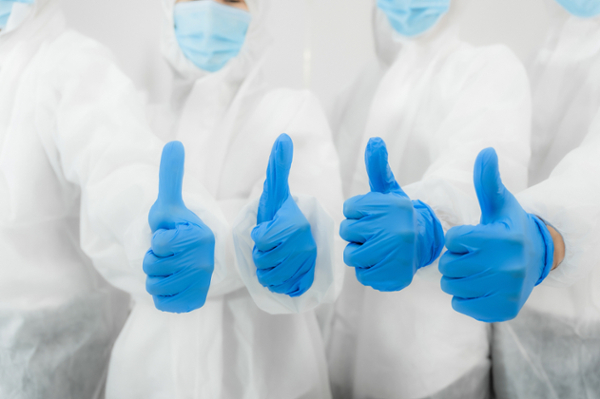General Laboratory Safety Information
General Laboratory Safety Information
General Laboratory Safety Information
Laboratory Safety Contact Information:
Email: labsafety@rowan.edu
Phone #: 856-256-5105
Thomas Boyle, Associate Director EHS, 856-566-6189, boyletp@rowan.edu
Rosemary Roberto, Laboratory Safety Supervisor, 856-256-4154, robertor@rowan.edu
Craig McClelland, Laboratory Safety Specialist, 856-256-5703, mcclellandc@rowan.edu
3D Printing Safety
Compressed Gas Cylinder Safety
Eyewashes and Safety Showers
Eyewash & Safety Shower Inspections
This document provides information on eyewash, drench hose and safety shower installation requirements and inspection/maintenance of this equipment.
Laboratory Responsibilities:
Labs are responsible for inspecting eyewashes and drench hoses weekly*. This inspection should be documented on or near the device (on a tag or nearby inspection sheet). See below for a printable inspection sheet:
Eyewash/Drench Hose Inspection Sheet
Eyewash/Drench Hose Inspection should include:
- Ensure that the path to the eyewash/drench hose is not obstructed.
- Verify that nozzle caps are in place to prevent contamination and that the nozzles, nozzle caps, and bowl/sink are clean and sanitary. Place a catch pan or bucket under the unit if a plumbed drain is not available.
- Actuate valve to fully open position. Water must flow within 1 second.
- Verify that nozzle caps come off when the eyewash or drench hose is activated.
- Verify that water continues to flow until manually turned off and can be used without requiring the use of the operator's hands.
- Look at the flow pattern. It should provide a gentle, controlled and non-injurious flow. If a dual-stream eyewash, both streams should rise to equal height in a pattern that will flush both eyes simultaneously.
- Continue to flush until water is clear.
- Put nozzle caps back in place.
Report problems via the University's work order system or by contacting Lab Safety at labsafety@rowan.edu.
*Eyewashes and drench hoses that cannot be flushed weekly by the lab because of a configuration not conducive to capturing water, must be inspected by EHS/Facilities quarterly.
Safety Showers
Safety showers are inspected annually by EHS/Facilities.
Laboratory Closeout Process
Rowan Laboratory Closeout Process
This document contains important infomation for research laboratories intending to vacate a Rowan University laboratory space.
Laboratories are required to undergo a breif closout inspection with Laboratory Safety prior to vacating a space. The inspection used by Laboratory Safety (titled Laboratory/Workspace Closeout Inspection), is available for use as a Self Inspection in BioRAFT. Laboratories are encouraged to perform this Self Inspection along with reviewing the above document to ensure that they are fully prepared to vacate a lab space.
Laboratory Room Signs
Academic and Research Laboratories must display signage at entrances indicating the hazards found within the room. These signs relay important safety information to students, staff, visitors, and first responders. It is the responsibility of each laboratory to ensure that door sign information is maintained up to date. Whenever laboratory operations change, room signs must be evaluated to ensure that they accurately reflect potential hazards.
To request a room sign or make changes to existing signage, please complete the Room Sign Request Form and submit it to LabSafety@Rowan.edu. The contact information that is provided will be entered in BioRAFT for use by Rowan University EHS and Public Safety and will not be printed on door signs. Based on the information provided on the form, Laboratory Safety will create appropriate door signs and post them at each entrance.
Please contact Laboratory Safety at LabSafety@Rowan.edu or 856.256.5105 if you have any questions about door signage or completing a request form.
Local Exhaust Ventilation Safety
Respiratory Protection
Standard Operating Procedures (SOPs)
A standard operating procedure is a set of step-by-step instructions compiled by a Principal Investigator (PI) to help laboratory workers carry out routine operations. SOPs aim to achieve efficiency, quality output, and uniformity of performance, while reducing miscommunication and failure to comply with industry regulations. Each SOP incorporates safety and health considerations that must be followed when laboratory work is performed. A well-written SOP provides detailed instructions that any individual with general subject knowledge can comprehend and use to repeatedly complete a procedure safely and effectively.
The guideline below should be used as a starting point when writing an SOP. It outlines all the key elements that a properly written SOP should include.
Working Alone Guide
When laboratory work must take place in isolation or after hours at Rowan University, this plan will help minimize risks and maintain safe operations.
